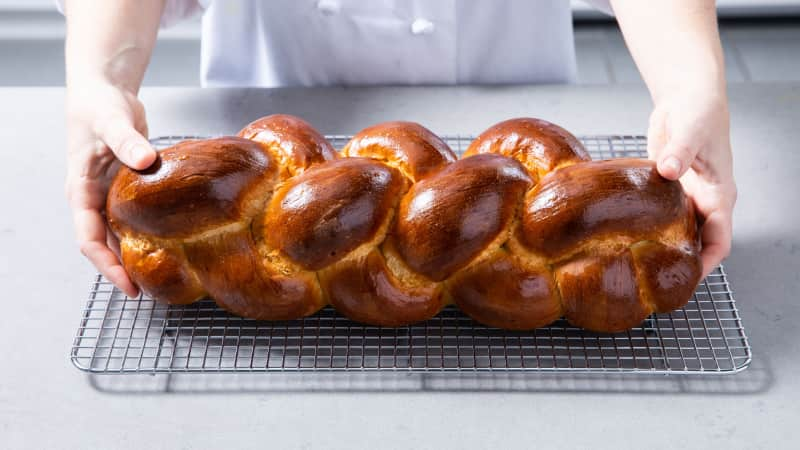Challah is well suited for novice bread bakers. There’s no starter to feed, the kneading can be done in a stand mixer, and a loaf can be made from start to finish in an afternoon. All you do is combine bread flour, instant yeast, eggs and/or egg yolks, water, sugar, salt, and vegetable oil in a mixer. (Challah is made with oil, not butter, because it is pareve—a Yiddish dietary term meaning that it is prepared without dairy or meat products and is, thus, permissible to be eaten with either dairy or meat at a meal.) Once you have a cohesive mass, you knead the dough until it is smooth and pliable and then cover it and let it rise until doubled in size—the visual cue that the yeast has consumed sugars in the dough and released gas that causes the dough to expand. Then you press out the air, which eliminates large air bubbles, encourages a fine crumb, and redistributes the yeast and sugars so they can continue their activity during the second rise. Finally, you divide the dough into even lengths that you roll into long ropes. You braid the strands, let the dough rise again, brush the surface with an egg wash, and bake it until the crust shines like polished mahogany.
Hoping that three whole eggs and 1/4 cup of oil would amply enrich the dough, I homed in on my main focus: how to turn this moist dough into something more workable. The consistency of a dough is measured in percent hydration—the amount of water relative to the amount of flour. During baking, the water turns to steam, which acts as a leavening agent by opening up the crumb so that the bread is light and soft. The hydration levels of the doughs in the recipes I found ranged from 45 percent to more than 60 percent, or about 4.5 to 6 parts water to every 10 parts flour. Doughs at the low end of that range were drier than your average bagel dough, presumably to make them easy to handle, but nobody wants challah with bagel‑like density. The nicest loaves I made came in at 55 to 60 percent, so I considered that my benchmark and got to work on a seemingly impossible task: making a moist dough handle like a drier, firmer dough.










